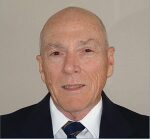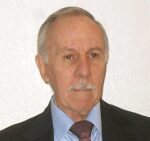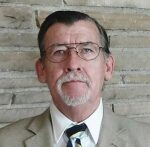The 2018 SPE Artificial Lift Conference and Exhibition will be held 28–30 August 2018 in The Woodlands, Texas. The event will feature a special Legends of Artificial Lift Luncheon honoring five people who have made outstanding contributions to the field of artificial lift technology. The 2018 SPE Legends of Artificial Lift Award recipients are Ken Decker, Cleon Dunham, Bill Lane, Tony Podio, and Lyle Wilson.
Ken Decker

Ken Decker has practiced gas lift for more than 30 years and is considered an expert in the use of gas lift valve performance, design, and troubleshooting. He has served on numerous API and ISO committees writing standards for gas lift equipment design and testing, and he has written numerous SPE papers on gas lift valve performance. After earning his BS degree in 1971 from Michigan State University, he worked on gas lift projects around the world, first with Teledyne Merla, then Otis Engineering. Upon his retirement from Otis in 1993, Decker formed his consulting business, Decker Technology.
In 1997, he founded the Valve Performance Clearinghouse (VPC) consortium and served as administrator until 2014, when he handed over administration to Louisiana State University. During his tenure at the consortium, he personally tested and developed custom correlations for 59 different commercially available gas lift valves and 216 valve-port size combinations. These VPC correlations were distributed to all VPC members and have now been incorporated into WinGLUE, SNAP, PROSPER, WellFlo, PipeSim, and OLGA, as well as into member companies’ inhouse software.
While Herald Winkler pioneered the concept of gas lift valve testing, Decker took it mainstream and integrated the use of valve performance in gas lift design and trouble shooting. His company, Decker Technology, manufactures an Automatic Valve Testing tool that verifies the quality of valves before sending them to the field. His company also developed the Dynalift gas lift simulator that is currently marketed by Weatherford.
“Gas lift has been practiced as an art since its first use,” Decker said, “and I attempted to push the boundaries into the realm of science. The goal has not yet been met, but if you really want to know what happens in gas lift, understanding the real behavior of gas lift valves is the first step.
“There are now several established methods of artificial lift, each with its own history, body of knowledge, and practices,” he said. “Some would suggest that artificial lift is at its zenith, but it only appears that way when looking at the methods from the perspective of current technology. There is ample opportunity to explore and improve how each of those methods is practiced. The next generation of artificial lift engineers will have much better tools and have different understandings of how their knowledge interacts with the science of artificial lift. It is that new ‘vision’ that has the potential of driving artificial lift to its zenith.”
William C. “Bill” Lane

Bill Lane has worked in the oil and gas industry for 40 years, first for Otis Engineering (now Halliburton Energy Services), and more recently for Weatherford International, where he held vice president positions over artificial lift research and development, elastomer systems, PCP systems, artificial lift emerging technologies, and artificial lift training. He was a founding member of the Artificial Lift Research and Development Council (ALRDC) and served as chairperson of the R&D committee. He holds a BS in mechanical engineering and an MS in mechanical engineering design, both from the University of Texas at Arlington.
Lane has been a leading voice for research and innovation in artificial lift, especially related to challenges in deep horizontal wells. He has helped train many of today’s experts in artificial lift, including providing content and instruction at the undergraduate and graduate levels at several universities. He wrote an SPE paper (170646) about collaboration between service companies and universities to improve teaching of production optimization using artificial lift. He has six patents, including “Reciprocating Rod Pump for Sandy Fluids;” he authored a book titled Artificial Lift Methods; and he edited all artificial lift papers that came out of Weatherford.
He won the SPE Gulf Coast Regional Production and Operations Award in 2015 and participated on the SPE 2013 Artificial Lift Forum program committee in 2013. He is now retired and living in Spring Branch, Texas.
“I actually started out in aerospace, and while that was interesting, I felt oil and gas had more opportunity for creative thought and innovation,” he said. “Gone are the days of everyone keeping their head down and doing their work. There is more collaboration within companies today, out of necessity, and there needs to be more consolidation of companies that provide all artificial lift offerings under one roof so we can do what is right for the well, rather than focus on what we have on hand. It’s more important to understand what is going on downhole than it ever has been.”
Lane says there are still lots of challenges in artificial lift, particularly in the area of jet pumps, which have the biggest potential, but have the smallest footprint in the industry. Some systems like to handle gas, and some like to handle liquids, but few do both. He also notes PC pumps would be more widely used if the industry had better elastomers.
“The challenges of producing from deep quasi-horizontal wells have required us to rethink how to apply and control lift technologies. Successful companies are putting teams together from different technology segments, including field design, drilling, well construction, completion, and production, to address these challenges. The more successful lift engineers will be those with broad production knowledge who work well in collaborative environments.”
Augusto L. (Tony) Podio

Tony Podio is a petroleum engineering consultant in Austin, Texas, specializing in artificial lift. Formerly he was a professor in the Petroleum and Geosystems Engineering Department at the University of Texas at Austin, where he taught and directed research in the areas of drilling and production. He was a visiting professor at the Norwegian Institute of Technology and at the Australian School of Petroleum at the University of Adelaide. He holds BS, MS, and PhD degrees in petroleum engineering from the University of Texas at Austin, and a BS in mining and petroleum engineering from the Universidad de los Andes in Bogota, Colombia.
Podio has authored or coauthored more than 50 technical papers or articles in international journals, holds seven US patents, and is coauthor of the The Beamlift Handbook and Acoustic Fluid Level Measurements in Oil and Gas Wells Handbook, published by The Petroleum Extension Service at the University of Texas at Austin. His SPE papers contain very practical tips for the field, such as using acoustic liquid level measurements in gas wells (SPE 101498) and analyzing and troubleshooting plunger-lifted wells (SPE 102336).
Podio is a registered professional engineer in Texas, is an SPE Legion of Honor member, and has served as an SPE Distinguished Lecturer and technical editor. He received the J.C. Slonneger award from the Southwestern Petroleum Short Course of Texas Tech University, and the Award for Exemplary Service and Contribution from the Artificial Lift R&D Council.
Podio advises engineers to “develop the ability to see in your mind’s eye what is happening at the bottom of a 4-in.-diameter black hole, thousands of feet deep, by analyzing all the information you can gather at the surface. Modern technology is wonderful, but needs to be verified by your own thinking. All computer programs have bugs, and what you see on the screen is not necessarily correct.”
Cleon Dunham

Cleon Dunham graduated from Cornell University in 1964 with a bachelor’s degree in agricultural engineering. He worked for Shell Oil Company for 36 years, the last few as coordinator of oilfield automation and artificial lift for Shell’s worldwide producing operations in the Netherlands. Shell was one of the earliest pioneers of artificial lift automation, and Dunham was the technology’s biggest cheerleader. During the 1970s and early 1980s, Shell developed automation technologies for rod pumps, ESPs, and gas lift. He was instrumental in the development of these technologies and was an ardent champion of their use. The technology evolved from vans that drove from pumping unit to pumping unit collecting dynamometer cards, to real-time surveillance systems that delivered the data directly from the well to the engineer’s desktop. In SPE paper 3967, “Bridging the Information Gap Between Operations and Engineering,” He describes that early work and the significance of automation technology in production and operations. Although the paper was written in 1973, the ideas presented are still relevant today.
Dunham is being honored for designing and implementing automation systems for gas lift, sucker rod pumps, and ESPs, as well as for water, CO2, and steam injection for enhanced oil recovery. “In the early days of oilfield automation, there were no service companies that provided the hardware and software needed to perform automation and surveillance of artificial lift systems,” he recalled, “so, we built it ourselves!” These systems were focused on monitoring, control, and optimization of artificial lift systems, and included both the hardware at the wellsite and the desktop software used to communicate with the wells and analyze their performance.
After he retired, he founded Oilfield Automation Consulting in 2000, where he serves as president. In 2001, Dunham cofounded the Artificial Lift Research and Development Council (ALRDC) with Jim Lea, Tony Podio, and Bill Lane, all of whom are SPE Legends of Artificial Lift Award recipients. ALRDC’s mission is to “share information between and among artificial lift users, suppliers, researchers, and consultants around the world, and to promote appropriate research and development for improved artificial lift business and practice.” Since its inception, the organization has organized numerous artificial lift conferences, raised money for petroleum engineering scholarships, promoted artificial lift consortia, and provided a platform for inventors of new artificial lift technologies to show their wares.
Dunham is an active member and contributor to API’s 19G Task Group, which develops product standards and recommended practices for gas lift technology. For the International Standards Organization, he was Task Group Secretary for the ISO 17078.1, 17078.2, 17078.3, and 17078.4 gas lift standards. He has four patents, and has taught artificial lift training courses in Argentina, Bolivia, Singapore, Malaysia, Vietnam, and the Middle East. He has participated in the SPE eMentoring Program, has served as a committee member for the SPE Artificial Lift Forum Series and PCP Applied Technology Workshops, and has participated in many SPE ESP Workshops.
An outspoken individual, Dunham offers the following advice to young engineers: “Try to be as aware as you can of what is going on in the industry through various conferences, committees, technical papers, and publications. Meet as many colleagues as you can. Most young people get out of college and want to go straight into management. While a few can be successful in management, there is only room for so many at the top. If, however, you develop strong technical skills, you can be gainfully employed with a rewarding career for the rest of your life.”
B. Lyle Wilson

“In 1964 my college funding at the University of Tulsa dried up, and I entered the field of artificial lift on the night shift with Centrilift,” ESP expert Lyle Wilson recalls. “My [lack of] collegiate progress was noticed by the Selective Service system, and I was given an opportunity for training, travel, and adventure. Returning from Vietnam, I finished my BS mechanical engineering degree at University of Tulsa in 1972 and officially started my career. I worked in directional drilling, fracking, and completions before I returned to ESP artificial lift.”
Wilson spent 20 years working for Oil Dynamics (ODI), eventually reaching the position of chief engineer. He ended up back at Centrilift when ODI was purchased by Baker Hughes and merged with the Centrilift division, and he finally retired as a senior research advisor, though he continues to work with Baker Hughes as a third-party contractor.
He has authored more than 60 papers in refereed and selective journals, in formal and informal publications, including SPE 148660, “There’s No Free Lunch, Pumping Two-Phase Fluids with ESP.” He received four Special Meritorious Awards for Engineering Innovation from Petroleum Engineer International magazine, and in 2004 he received the J.C. Slonneger Award for Outstanding Achievement from the Southwestern Petroleum Short Course.
“I have lectured on ESPs in courses and at universities on four continents across the world, I am credited with 53 US patents, and I even had the pleasure of winning an infringement court action on one of them,” he said. “It has been a blast doing it.”
Wilson compares the various phases of the upstream oil business to Dino, the brontosaurus adopted by Sinclair Oil as its marketing mascot. Dino’s head represents exploration; it points the way. Dino’s neck is drilling. It pushes and follows exploration, and it is measured in weeks or months. Completions is the massive body of preparations for production, which also lasts weeks or months. Production is the tail. It is at its largest at the end of completions and tapers off as Dino passes, which lasts for years.
“When the oil price drops, the first to feel it is exploration and drilling, then completions, and last production. The reverse is true when the oil prices go up,” he noted. “I started in drilling and in 3 years moved to completions. Three years later, I moved to production. The differences are often more comical than obstacle. I do not think it matters where you start.”
To stress the importance of artificial lift, Wilson noted that if a well is down for 1 day, the oil company loses 0.3% of the annual revenue from that well, which can never be recovered. If it’s down for 6 weeks, 11% of the well’s revenue is gone for the year, and the company is not happy. In fact, he was once reprimanded for mistakenly believing that a 100-day ESP run was a good run.
“On my first artificial lift field job, the sun was beginning to set. Recalling my drilling experience [working 24/7 weekends and holidays until the job was done], I asked the company man, ‘Where are the lights?’ He said, ‘In town; we will be going in a few minutes.’”
For more information about the event, visit https://www.spe.org/events/en/2018/conference/18alce/home-page.html.

